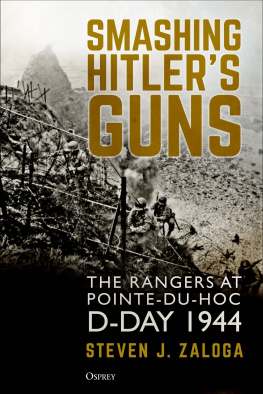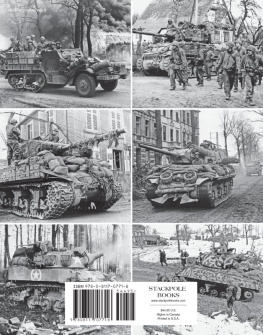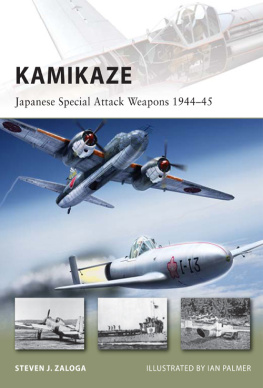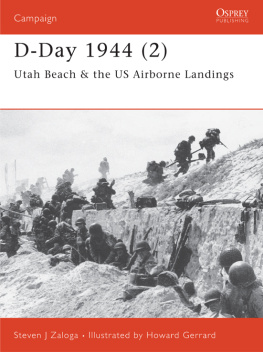Steven J. Zaloga - St Lô 1944: the battle of the hedgerows
Here you can read online Steven J. Zaloga - St Lô 1944: the battle of the hedgerows full text of the book (entire story) in english for free. Download pdf and epub, get meaning, cover and reviews about this ebook. year: 2016, publisher: Bloomsbury Publishing, genre: History. Description of the work, (preface) as well as reviews are available. Best literature library LitArk.com created for fans of good reading and offers a wide selection of genres:
Romance novel
Science fiction
Adventure
Detective
Science
History
Home and family
Prose
Art
Politics
Computer
Non-fiction
Religion
Business
Children
Humor
Choose a favorite category and find really read worthwhile books. Enjoy immersion in the world of imagination, feel the emotions of the characters or learn something new for yourself, make an fascinating discovery.
- Book:St Lô 1944: the battle of the hedgerows
- Author:
- Publisher:Bloomsbury Publishing
- Genre:
- Year:2016
- Rating:5 / 5
- Favourites:Add to favourites
- Your mark:
- 100
- 1
- 2
- 3
- 4
- 5
St Lô 1944: the battle of the hedgerows: summary, description and annotation
We offer to read an annotation, description, summary or preface (depends on what the author of the book "St Lô 1944: the battle of the hedgerows" wrote himself). If you haven't found the necessary information about the book — write in the comments, we will try to find it.
St Lô 1944: the battle of the hedgerows — read online for free the complete book (whole text) full work
Below is the text of the book, divided by pages. System saving the place of the last page read, allows you to conveniently read the book "St Lô 1944: the battle of the hedgerows" online for free, without having to search again every time where you left off. Put a bookmark, and you can go to the page where you finished reading at any time.
Font size:
Interval:
Bookmark:

Steven J. Zaloga received his BA in History from Union College and his MA from Columbia University. He has worked as an analyst in the aerospace industry for nearly four decades, covering missile systems and the international arms trade, and has served with the Institute for Defense Analyses, a federal think tank. He is the author of numerous books on military technology and military history, with an accent on the US Army in World War II as well as Russia and the former Soviet Union.
Johnny Shumate works as a freelance illustrator living in Nashville, Tennessee. He began his career in 1987 after graduating from Austin Peay State University. Most of his work is rendered in Adobe Photoshop using a Cintiq monitor. His greatest influences are Angus McBride, Don Troiani, and douard Detaille.
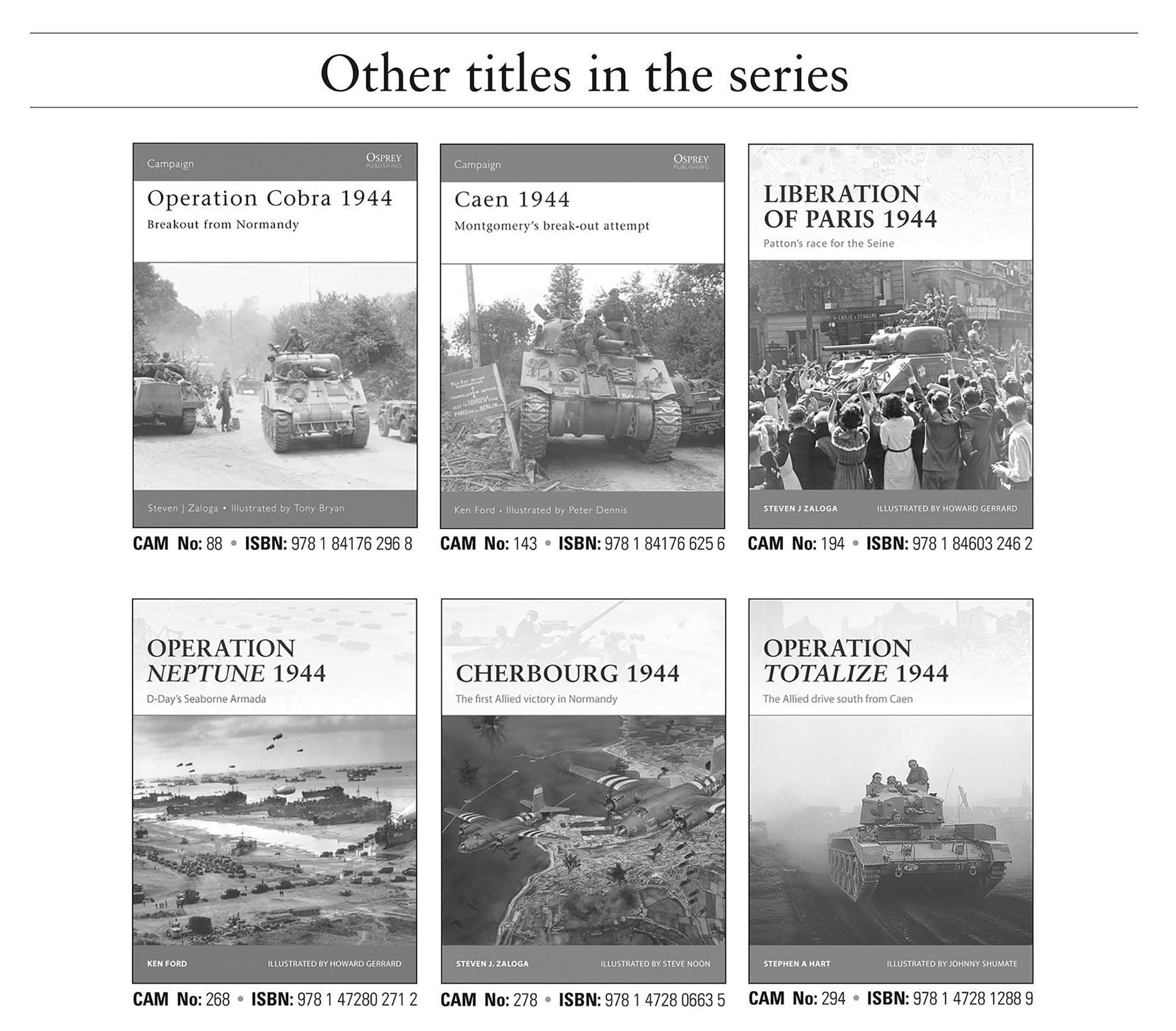


The Strategic Situation, July 3, 1944
General Dietrich von Choltitz, described the Battle of the Hedgerows as a monstrous blood-mill, the likes of which I have not seen in my eleven years of battle. This three-week campaign in July 1944 was a series of relentless small-scale skirmishes in the countryside north east of St L. For the US Army, the objective was to push out of the constricted coastal low-lands south of Omaha Beach to reach terrain better suited for a mechanized break-out. Aside from the immediate terrain objectives, the campaign was also intended to decimate the Wehrmacht in Lower Normandy to ensure the success of the eventual break-out. From the German perspective, the mission was to bottle up the US Army in the hedgerow country around the Vire River since the terrain was far more suitable for defense than the countryside further south. By the third week of July, the First US Army had reached far enough south to stage the break-through, and the German 7. Armee had suffered such exceptional losses that it was on the verge of being routed. On July 25, 1944, the First US Army initiated Operation Cobra, starting the break-out that destroyed the German Army in Normandy.

The Battle of the Hedgerows was fought in the bocage country of the western region of Lower Normandy. The hedgerows formed a natural fortification network that facilitated the German defense.
At the beginning of July 1944, the Allied lodgment area was far smaller than anticipated in the original Overlord plans. Three weeks after D-Day, Gen. Omar Bradleys First US Army had captured the port of Cherbourg, its initial tactical objective (for more information see Steven Zaloga, Cherbourg 1944: The First Allied Victory in Normandy, Osprey Campaign 278 (2015). In the British Second Army sector, the vital road junction of Caen had not yet been secured. This was in no small measure due to the balance of opposing forces in Lower Normandy.

The British Second Army had a tough slog in the open country south of Caen due to the density of German defenses. Repeated tank attacks failed to breakthrough to the Seine River as originally planned. This is a pair of Canadian Sherman Fireflies of the Sherbrooke Fusilier Regiment knocked out in the fighting with the 12. SS-Panzer-Division Hitlerjugend on June 7, 1944.
From the German perspective, the British Second Army posed the greatest threat of a break-out from Normandy. The terrain beyond Caen was much more favorable for a mechanized advance to the Seine River and on to Paris. The terrain southeast of Caen was open farmland, well suited to tank operations. This was reflected in the Allied order of battle, with a preponderance of Allied tank strength in the British sector.
The British difficulties in breaking the German cordon was due in large measure to the density of opposing forces. By the middle of June, the British Second Army around Caen was facing four German Panzer divisions, with a combined strength of more than 675 German tanks and AFVs on a front only 20 miles wide. By way of comparison, the Wehrmachts Herresgruppe Mitte (Army Group Center) , the target of the Red Armys Operation Bagration offensive in late June 1944, had about 500 tanks and AFVs on a sector about 250 miles wide. In other words, Montgomerys forces were facing an opponent with an armored density about 15 times greater than the key summer battle fought by the Red Army. Even Herresgruppe Nordukraine, the most heavily defended sector of the Russian Front in June 1944, had a German armor density that was less than six times as dense as the German Panzer force facing the British in late June 1944.

The British and Canadian attacks near Caen were frustrated by the opposition of concentrated Panzer forces as well as extensive anti-tank defenses. This is a 75mm PaK 40 anti-tank gun of the 12. SS-Panzer-Division Hitlerjugend south of Caen in June 1944.
The First US Army sector was further west than the British Second Army, and so more remote from the Seine River and Paris. Furthermore, the terrain was not well suited to mechanized operations. The terrain at the base of the Cotentin peninsula was tightly compartmentalized by bocage, the French term for coastal hedgerows. This situation was exacerbated by the sodden marshlands feeding into the Vire River estuary and numerous other rivers in the area. These marshlands were swollen by late June rain and some of the areas had been dammed and flooded by the German army to repel Allied airborne landings. The conditions in the bocage country were well known to the Heeresgruppe B commander, GFM Erwin Rommel, who had fought in the area during the 1940 Battle of France. The Germans recognized the defensive advantages of the bocage country, and so concentrated their limited forces, especially their premier Panzer divisions, in the British sector. The fighting in the bocage country was conducted primarily by infantry forces on both sides.
| June 6 | D-Day invasion of Normandy. |
| June 23 | Red Army stages Operation Bagration offensive. |
| June 2430 | Port of Cherbourg captured by VII Corps, First US Army. |
| June 29 | Panzergruppe West starts a doomed counter-offensive against British forces near Caen. |
| July 3 | Start of Battle of the Hedgerows by Middletons VIII Corps. |
| July 4 | Start of the Battle of the Hedgerows by Collins VII Corps. |
| July 7 | Start of the Battle of the Hedgerows by Corletts XIX Corps. |
Font size:
Interval:
Bookmark:
Similar books «St Lô 1944: the battle of the hedgerows»
Look at similar books to St Lô 1944: the battle of the hedgerows. We have selected literature similar in name and meaning in the hope of providing readers with more options to find new, interesting, not yet read works.
Discussion, reviews of the book St Lô 1944: the battle of the hedgerows and just readers' own opinions. Leave your comments, write what you think about the work, its meaning or the main characters. Specify what exactly you liked and what you didn't like, and why you think so.


